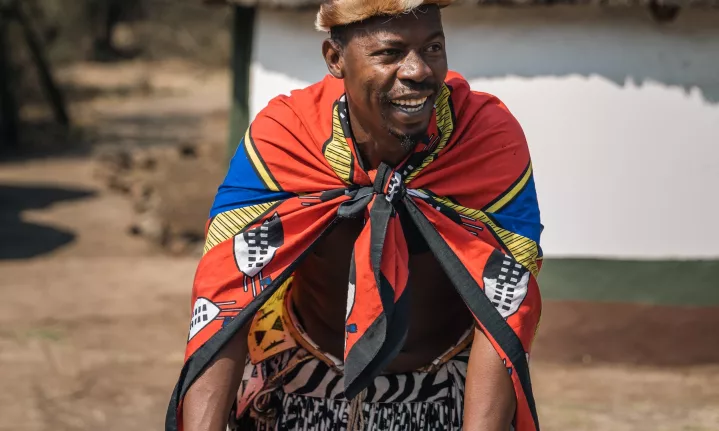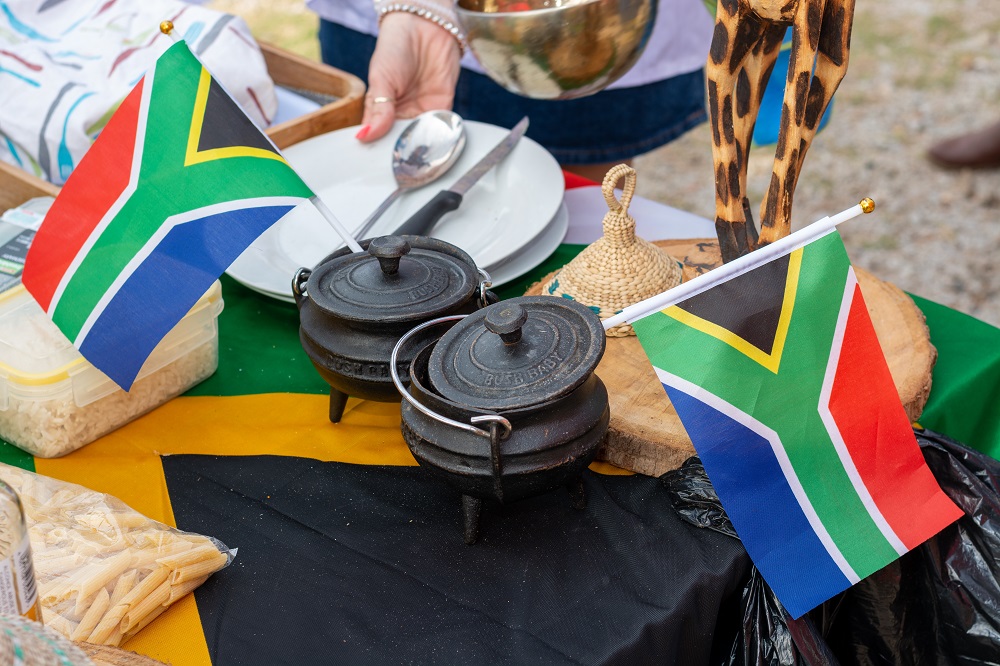South African Culture Today Fundamentals Explained
South African Culture Today Fundamentals Explained
Blog Article
Getting The South African Culture Today To Work
Table of ContentsThe Facts About South African Culture Today RevealedThe Buzz on South African Culture TodayThe Greatest Guide To South African Culture TodayHow South African Culture Today can Save You Time, Stress, and Money.The South African Culture Today DiariesThe Best Strategy To Use For South African Culture Today
This adheres to with singing and drum pounding. The couple then meet with the elders and discuss the value of their union. A matter of importance in Zambian villages is the passing away of loved ones. All participants of the town placed money, effort and time with each other for the burial of the deceased.During the mourning duration; males stay outside your house and the females remain inside the house of the deceased. After chatting concerning the dead, the village strolls to the area of interment to claim their last farewells. Songs and dancing is an extremely essential aspect of the Zambian culture. The different tribal systems have their very own dance kinds; nonetheless, makishi prevails among all people.
The Buzz on South African Culture Today
When it comes to songs, drums are used the most, with a range of drumming events. In Zambia, bulk of the people are Christian; Protestant and Roman Catholic. There are little teams of Muslims and Hindus, with the rest adhering to neighborhood native tribal beliefs.

South African heritage and culture is greatly diverse, and consists of several various groups of individuals who each have their very own practices and beliefs. Having such a diversity of people and societies is what makes South Africa so one-of-a-kind. In real feeling of the expression, we are a rainbow country.
South Africa has roughly three hundred thousand Portuguese individuals living in it. Making it the 7th on the checklist of countries with the most Portuguese people in it beyond Portugal. Portuguese is not just a society, however it is likewise a language and a race. Portuguese people originate from the nation of Portugal in Europe, however, because of Portugal (like many other nations in Europe) checking out the world and dominating other nations during the 15th 20th centuries, South Africa has what we call Portuguese South African's living in it.
Rumored Buzz on South African Culture Today
Amongst the noticeable functions of the topography is a plateau that covers practically two thirds of the center of the country. The plateau complicated increases towards the southeast, where it culminates in the Drakensberg variety, component of an escarpment that divides the plateau from the coastal locations. The Drakensburg includes Sparkling wine Castle, the highest possible optimal in the country.
The region north of the Witwatersrand, called the bushveld, slopes downward from eastern to west toward the Limpopo River, which develops the international border. The western section of the plateau, the middleveld, also descends towards the west and varies in altitude in between the highveld and bushveld. Between the Drakensburg and the eastern and southerly shoreline, the land comes down to the sea.
Nearer the shore there is a low-lying level called the eastern lowveld. Southwest of the plateau the nation ends up being considerably a lot more dry, paving the way to the stony desert of the Great Karroo, verged on the eastern by the lower, much better sprinkled plateau of the Little Karroo. Separating the dry southern interior from the sandy littoral of the southern coast and West Cape is another variety, the Langeberg.
South African Culture Today Can Be Fun For Anyone
The country's racially, ethnically, and politically split history has actually created nationwide and subnational icons that still function as symbols of the country, and others signs that are approved just by certain groups. The monoliths to white settler conquest and political prominence, such as the Afrikaner Voortrekker ("pioneer") Monument in Pretoria and the Rhodes Monolith honoring the British colonial empire contractor and Cape head of state Cecil Rhodes, remain sectarian signs.
The first modern residents were the San ("bushman") hunter-gatherers and the Khoi ("Hottentot") peoples, that rounded up animals (South African culture today). The San may have been present for countless years and left proof of their presence in countless old cavern paintings ("rock art"). Bantu-speaking clans that were the forefathers of the Nguni (today's amaZulu, amaXhosa, amaSwazi, and vaTsonga individuals) and Tswana-Sotho language teams (today's Batswana and Southern and Northern my site Basotho) migrated down from east Africa as early as the fifteenth century

Both former republics of the Orange Free State and Transvaal (South African Republic) were established by Afrikaner inhabitants that defeated and dispossessed the Basotho and Batswana. Lesotho would have been forcibly integrated into the Orange Free State without the extension of British defense in 1869. The utmost unification of the country resulted from the South African Battle (18991902) in between the British and the two Afrikaner republics, which reduced the country to spoil important link at the start of the twentieth century.
Afrikaners historically considered themselves the only true South Africans and, while providing full citizenship to all residents of European descent, rejected that status to individuals of shade until the autonomous shift of 1994. British South Africans retain a feeling of social and social connection to Great Britain without compromising their identification as South Africans.
What Does South African Culture Today Do?
The variety and fragmentation within ethnic groups and the equilibrium of stress between those teams during the twentieth century protected against interethnic civil dispute. While intergroup stress over resources, privileges, and political dominance continue to be, those disputes are as likely to pit Zulu against Zulu as Zulu versus Xhosa or African versus Afrikaner.
From colonial India, British merchants and administrators brought the rounded steel decorative roofings and slender shoelace work pillars that still typify the outdoor patios of cottages in communities and cities throughout the country. Holy places add a crucial building element even in the smallest communities. In addition to the skyrocketing steeples and classic stonework of Afrikaans Dutch Reformed churches, Anglican churches, synagogues, mosques, and Hindu shrines give range to the religious building scene.

Butchering and the brewing of typical grain beer are crucial in securing the involvement and a good reputation of the ancestors that are considered the guardians of good luck, success, and health. Indian neighborhoods keep their indigenous cooking practices and apply them on Islamic and Hindu ritual and ritualistic celebrations. Afrikaners and Coloured people collect at weekends and unique celebrations at multifamily bbqs called braais, where community bonds are enhanced.
Because this was the main financial enterprise of both black Africans and white homesteaders, dispute in between those groups focused on the possession of grazing land and livestock. In 1867, the biggest ruby down payments in the globe were discovered at Kimberley in the west central location. The wealth from those areas helped finance the exploitation of the best gold reef on the planet, which was found on the Witwatersrand in 1886.
The Of South African Culture Today
This led to misconceptions and intentional misrepresentation in the ventures of white inhabitants and federal government officials with African principals during the colonial duration (South African culture today). In the establishment of African books, some facets of communal and primarily "tribal depend on" land tenure were maintained, and even in white backwoods, kinds of common period were still practiced in locations with African neighborhoods
After the autonomous makeover of 1994, programs for land restitution, redistribution, and reform were set up, however progress has actually been sluggish. The white minority his explanation still controls eighty percent of the land. Following agricultural land intrusions in Zimbabwe, the Department of Land Matters has promised to speed land redistribution.
Report this page